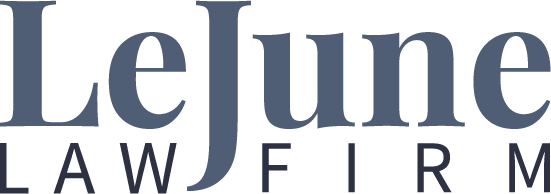The Copyright Act grants the copyright holder exclusive rights to use and to authorize the use of his work in six qualified ways:
To reproduce the copyrighted work in copies or phonorecords;
to prepare derivative works based upon the copyrighted work;
to distribute copies or phonorecords of the copyrighted work to the public by sale or other transfer of ownership, or by rental, lease, or lending;
in the case of literary, musical, dramatic, and choreographic works, pantomimes, and motion pictures and other audiovisual works, to perform the copyrighted work publicly;
in the case of literary, musical, dramatic, and choreographic works, pantomimes, and pictorial, graphic, or sculptural works, including the individual images of a motion picture or other audiovisual work, to display the copyrighted work publicly; and
in the case of sound recordings, to perform the copyrighted work publicly by means of a digital audio transmission.
See 17 U.S.C. § 106
With regard to distribution, the statute does not define the term “distribute,” so courts have interpreted the term in light of the statute’s plain meaning and legislative history. Courts throughout the country have found that distribution requires a showing that an unlawful copy was disseminated “to the public.” 17 U.S.C. § 106(3); see Hotaling v. Church of Jesus Christ of Latter-Day Saints, 118 F.3d 199 (4th Cir. 1997); National Car Rental v. Computer Associates, 991 F.2d 426, 434 (8th Cir. 1993); 2 Nimmer, Section(s) 8.11[A] at 8-137. However, this interpretation is not meant to place a limitation on the meaning of “distribution” to a physical change of hands.
The drafters of the Copyright Act of 1976 recognized the rapid advances of technology and specifically sought to “guard against” the “real danger [of] confining the scope of an author’s rights on the basis of the present technology so that, as the years go by, his copyright loses much of its value because of unforeseen technical advances.” See State of the H. Comm. On the Judiciary, 89th Cong., Copyright Law, Revision, Part 6: Supplementary Report of the Register of Copyrights on the General Revision of the U.S. Copyright Law: 1964 Revision Bill 19 (Comm. Print 1965) (The “1965 Supplementary Report”), supra 114, at 15. Congress specifically noted that “of the many problems dealt with in the bill, those covered by the exclusive rights sections are most affected by advancing technology in all fields of communications, including a number of future developments that can only be speculated about.” See 1965 Supplementary Report, supra note 114, at 13.
Presciently, Congress goes on to state that [I]t is becoming increasingly apparent that the transmission of works by nonprofit broadcasting, linked computers, and other new media of communication, may soon be among the most important means of disseminating them and will be capable of reach vast audiences. Even when these new media are not operated for profit, they may be expected to displace the demand for authors’ works by other users from whom copyright owners derive compensation.” Id. at 13-14.
Thus, Congress conceived of the exclusive rights broadly and thereby encouraged courts to interpret them to avoid their erosion as a result of unforeseen technological change. Specifically, with regard to the distribution right, the 1965 Report notes that the language of section 106(3) “is virtually identical with the definition of ‘publication’ in section 101, but for the sake of clarity we have restated the concept here.” Id. Indeed, throughout the 1965 Supplementary Report, Congress uses the words “publish” and “distribute” interchangeably, revealing that the drafters intended for the statutory definition of “publication” to inform the scope of the distribution right. This definition includes “the offering to distribute copies or phonorecords,” indicating that Congress conceived of the distribution right as encompassing mere offers of the work to the public (i.e. making works available to the public).
This broad scope has been interpreted by many courts throughout the country. For example, in A&M Records, Inc. v. Napster, Inc., the Ninth Circuit held that “Napster users who upload file names to the search index for others to copy violate plaintiffs’ distribution rights.” A&M Records, Inc. v. Napster, Inc., 239 F.3d 1004, 1014 (9th Cir. 2001). In later proceedings in the Napster matter, the district court judge examined the issue more closely and held that a “copyright owner seeking to establish that his or her copyrighted work was distributed in violation of section 106(3) must prove that the accused infringer either (1) actually disseminated one or more copies of the work to members of the public or (2) offered to distribute copies of the work for purposes of further distribution, public performance, or public display.” In re Napster, Inc., Copyright Litigation, 377 F.Supp. 2d 796, 802-05 (N.D. Cal. 2005). In the case Playboy Enters., Inc. v. Webbworld, Inc., the court held that the defendant “distributed” the plaintiff’s copyrighted works “by allowing its users to download and print copies of electronic image files.” Playboy Enters., Inc. v. Webbworld, Inc., 991 F.Supp. 543, 551 (N.D. Tex. 1997); see also Playboy Enters., Inc. v. Frena, 839 F.Supp. 1552 (M.D. Fla. 1993) (finding that copyrighted photographs posted on defendants’ website implicated plaintiff’s exclusive right of distribution).
The Fourth Circuit followed this interpretation in the case Hotaling v. Church of Latter-Day Saints (“Hotaling”). In Hotalling, the plaintiffs compiled genealogical research materials, of which the Mormon Church made a number of unauthorized microfiche copies. Hotaling v. Church of Latter-Day Saints, 118 F.3d 199 (4th Cir. 1997). Fourth Circuit held that “[w]hen a public library adds a work to its collection, lists the work in its index or catalog system, and makes the work available to the borrowing or browsing pubic, it has completed all the steps necessary for distribution to the public.” Id at 203.
As such, an infringer that uploads a pirated work to a private database accessed by a select group of people with the intent that such individuals access and use the work, he has violated the copyright-holder’s exclusive right of distribution.


